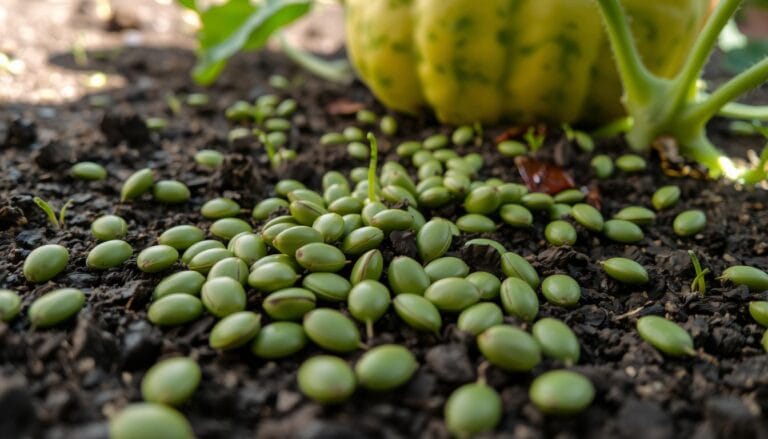What are the different lines of horticulture?

Step into the vibrant world of horticulture and get ready for a journey of discovery. Here, plant life blooms with endless possibilities. Whether you’re a seasoned gardener or new to it, this article will show you the many lines of horticulture.
These lines cover the art and science of growing fruits, vegetables, flowers, and ornamental plants. From lush orchards to carefully tended gardens, horticulture is a rich field. Each part of it adds to our world’s beauty and well-being.
Horticulture is rooted in a deep love for nature, a passion that has lasted for thousands of years. As we explore the different lines of horticulture, you’ll learn about plant domestication’s history and modern gardening advances. You’ll also see how horticulture shapes our environment, food, and beauty.
Join us as we dive into the endless opportunities in horticulture. From stunning floral displays to abundant harvests, we’ll uncover the gems that make this field special.
Table of Contents
Understanding the Fundamentals of Horticulture
Horticulture is the art and science of growing plants. It’s a key part of our world. The word “horticulture” comes from Latin, meaning “garden” and “to cultivate.”
Definition and Etymology of Horticulture
Horticulture deals with growing plants like fruits, veggies, flowers, and more. It involves many practices, from growing crops to designing landscapes.
Historical Development of Plant Cultivation
Plant cultivation started with ancient civilizations. They grew plants for food, medicine, and beauty. People like Liberty Hyde Bailey and John Lindley helped grow horticulture.
Basic Principles of Plant Science
Plant science is at the heart of horticulture. It studies plant biology, soil, and how plants grow. Knowing these basics is key for horticulture practices, plant science, and gardening techniques.
“Horticulture is the art and science of growing fruits, vegetables, flowers, and other plants.” – Liberty Hyde Bailey, American horticulturist
The horticulture industry offers many jobs. You can work in plant production, design, retail, or research. It’s a big economic sector with lots of roles.
Horticulture boosts local economies through sales and trade. It provides essential foods like fruits, veggies, and herbs. This helps ensure we have healthy food.
Urban and community gardens help local food systems. They reduce reliance on long supply chains. Gardens also improve mental health and offer therapy.
Major Line of Horticulture Categories
Horticulture is a wide field with many categories. These include growing fruits and nuts, vegetables, flowers, and ornamental plants. Each area needs special skills and methods for success.
Pomology is about growing tree fruits and small fruits like berries. Olericulture focuses on vegetables, from leafy greens to root vegetables. Floriculture is about growing flowers for cut arrangements and potted plants.
Landscape horticulture is about designing and caring for gardens and parks. Other areas include tree care, plant breeding, and studying how plants change after they’re picked.
Horticulture is key for food, the environment, and beauty. It offers many paths, from growing food to creating stunning landscapes. Horticulture is full of opportunities to explore.
| Line of Horticulture | Focus | Examples |
|---|---|---|
| Pomology | Fruit and nut crops | Apples, pears, citrus, berries, grapes |
| Olericulture | Vegetable crops | Leafy greens, root vegetables |
| Floriculture | Ornamental flower production | Cut flowers, potted plants |
| Landscape Horticulture | Ornamental plants and turf | Parks, gardens, golf courses |
Horticulture has many areas, showing its wide range. Whether you’re into line of horticulture, crop production, or plant cultivation, there’s much to discover and do.
Pomology: The Science of Fruit Production
Pomology is a branch of horticulture that focuses on growing fruits. It involves many practices and techniques for successful fruit production. Pomologists are key in improving fruit quality, creating new varieties, and solving production and storage challenges.
Tree Fruits and Orchard Management
Pomologists work with tree fruits like apples, pears, and peaches. They manage orchards through pruning, pest control, and harvesting. Knowing how different trees grow is crucial for better yields.
Small Fruit and Berry Cultivation
Small fruits and berries, like strawberries and grapes, are also part of pomology. These crops need special growing methods and pest control. Pomologists aim to improve their yield and taste.
Nut Crop Production
Nut crops, such as almonds and walnuts, are also studied in pomology. Pomologists focus on growing these high-value crops. They look at site selection, propagation, and harvesting to improve quality.
Pomologists use their knowledge in plant science and soil management. They ensure the sustainable growth of many fruits and nuts. Their work is crucial for meeting the world’s demand for healthy food.
| Fruit Type | Climate Requirements | Key Cultivation Practices |
|---|---|---|
| Tropical Fruits | Hot and humid regions | Mango, Papaya, Pineapple |
| Temperate Fruits | Middle latitudes | Apple, Pear, Peach, Plum, Grape, Strawberry |
| Nut Crops | Varied climates | Almond, Pecan, Walnut |
Pomology is key to a sustainable fruit and nut supply. Pomologists tackle the unique needs of each crop. Their work is vital for a world with more nutritious and tasty food.
Olericulture: Vegetable Crop Production
Olericulture is a branch of horticulture that deals with growing vegetables. These plants are used in cooking and come in many types. Examples include root vegetables like carrots, leafy greens like lettuce, and fruit vegetables like tomatoes.
Each vegetable type needs its own growing method. This is because they have different needs and characteristics.
How you grow vegetables changes depending on where you are. In different climates, you need to adjust how you prepare the soil, water, and manage pests. This specialized knowledge is essential for successful vegetable crop cultivation.
| Vegetable Type | Examples | Key Cultivation Considerations |
|---|---|---|
| Root Vegetables | Carrots, Beets, Radishes | Well-drained soil, consistent moisture, minimal compaction |
| Stem Vegetables | Asparagus, Celery, Rhubarb | Nutrient-rich soil, adequate sunlight, careful harvesting |
| Leaf Vegetables | Lettuce, Spinach, Kale | Consistent moisture, protection from pests, quick harvesting |
To grow vegetables well, you need to know a lot about plants and gardening. By learning about olericulture, growers can make lots of different vegetables. These vegetables help feed communities and support local food systems.
Floriculture: Ornamental Flower Production
Floriculture is a special part of horticulture that deals with growing flowers and plants for beauty. It includes the cut flower trade, greenhouses, and potted plants for homes and gardens. Floriculturists help bring nature’s beauty into our lives with flowers like roses and lilies.
Cut Flower Industry
The cut flower industry is booming, providing fresh flowers to florists, event planners, and stores. Growers use new methods to grow flowers all year and keep them fresh. The global market for cut flowers is growing fast, expected to hit $19.3 billion by 2024.
Greenhouse Operations
Greenhouses are key in modern floriculture, letting growers control the environment and grow flowers all year. They use advanced tech like climate control and irrigation. This helps grow a wide range of plants, from delicate cut flowers to strong potted ones.
Potted Plant Production
Potted plants, like flowers and leaves, are also important in floriculture. They add color and life to homes and gardens. Growers use special methods to make sure these plants are healthy and beautiful.
Floriculture is a field that mixes horticulture, technology, and love for nature. By growing flowers, running greenhouses, and making potted plants, floriculturists make our lives more beautiful.
Landscape Horticulture and Design
Landscape horticulture combines art and science to make outdoor spaces beautiful and useful. It covers everything from home gardens to public parks. Landscape horticulturists are key in shaping our surroundings.
Choosing the right plants is crucial in landscape horticulture. Experts pick plants that do well in local weather and soil. They know how to mix different plants to create stunning and lasting landscapes.
It’s not just about plants. Landscape horticulturists also use paths, walls, and water features. They make sure these elements work together to create beautiful and useful spaces.
Today, sustainability is important in landscape horticulture. Experts use eco-friendly methods like water-saving plants and pest control. This way, landscapes are not only pretty but also good for the environment.
Whether you want to improve your backyard or revamp a public area, a landscape horticulturist can help. They turn your ideas into beautiful and practical spaces.
| Landscape Design Elements | Description |
|---|---|
| Straight Lines | Evoke formality and direct the eye to focal points. |
| Curved Lines | Appear more relaxed and informal, promoting leisurely exploration. |
| Vertical Lines | Suggest upward movement, drawing the eye skyward. |
| Horizontal Lines | Create lateral movement, making areas seem larger. |
| Coarse Texture | Creates depth and visual interest in a garden. |
| Fine Texture | Offers a softer and subtler aesthetic in garden design. |
Landscape horticulturists are artists and scientists who make outdoor spaces beautiful and useful. They use their knowledge of plants, design, and sustainability to create inviting environments. These spaces make our lives better.

Nursery Management and Plant Propagation
Nursery management is key in horticulture. It involves growing and caring for plants for sale or landscaping. Techniques like container production, field growing, and various propagation methods are used. Knowing these is vital for running a successful nursery and meeting gardening and landscaping needs.
Container Production Methods
Container production is great for using space well and moving plants easily. Plants are grown in containers like pots, trays, or bags with the right soil. This method helps control growing conditions, manage pests and diseases, and grow many plant types and sizes.
Field Growing Techniques
Field growing is used for bigger plants and trees. Plants are grown directly in the ground, helping them develop strong roots and grow large. Nursery managers must manage soil, water, and weeds to help these plants grow well.
Propagation Strategies
Nursery managers use different ways to grow new plants. These include seed, cuttings, grafting, and tissue culture. Each method has its own benefits and challenges. Knowing what each plant needs is key for successful growth.
Good nursery management needs a deep understanding of plants, growing techniques, and market needs. By mastering container production, field growing, and propagation, nurseries can provide quality plants for gardeners and landscapers.
| Propagation Method | Advantages | Disadvantages |
|---|---|---|
| Seed Propagation |
|
|
| Asexual Propagation |
|
|
Environmental Factors in Modern Horticulture
In the world of horticulture, growing plants and crops is complex. It involves understanding many environmental factors. These include temperature, light, water, and nutrients. All these elements are vital for the success of growing plants in greenhouses.
Today, horticulturists use new methods to improve growing conditions. They control temperatures and use special lights for different plants. This helps plants grow better and longer.
Managing water is also key in horticulture. New irrigation systems and water-saving methods are used. This is because water is becoming scarce worldwide.
Horticulturists also focus on soil health. They use organic fertilizers and pest control methods. This keeps the soil healthy and reduces harm to the environment.
As climate change grows, horticulture is changing too. It’s adopting sustainable practices and new technologies. This ensures plants and crops can be grown in a way that’s good for the environment.
| Metric | Value |
|---|---|
| Top three countries showing growth in the organic market in 2021/2022 | Canada (9.7%), Japan (8.4%), Estonia (6.0%) |
| Countries with the largest increases in the organic food market in 2016–2017 | France (18%), Spain (16%), Denmark (15%) |
| Estimated organic produce market size in South Africa in 2005 | ZAR 200-400 million |
| Increase in organic land area in the European Union (EU) between 2012 and 2020 | 56% |
| Rise in the number of organic producers in the EU between 2012 and 2020 | 40% |
| Increase in the monetary value of retail sales of organic produce in the EU between 2012 and 2020 | 114% |
The horticulture industry is always changing. It needs to use sustainable practices and new technologies. By managing environmental factors well, horticulturists can make their work successful and sustainable.

“The future of horticulture is one of environmental stewardship and innovation.”
Conclusion
Horticulture is a wide field that includes growing fruits, vegetables, and ornamental plants. It also involves designing beautiful landscapes. The industry is changing fast, thanks to new technology and environmental issues.
Jobs in horticulture range from research to landscape management. Each role is crucial for food, the environment, and beauty in our lives.
If you love plants and gardening, horticulture has a lot to offer. It’s a field that lets you make a difference in the world. By joining, you help grow food, improve landscapes, and teach others about nature.
Exploring horticulture can be exciting and rewarding. You’ll see how people have made a big impact in this field. And you’ll think about what you can do next.
The journey in horticulture comes with challenges and chances. But with hard work and a love for plants, you can make a mark. You’ll help shape the future of horticulture.
FAQ
What are the different lines of horticulture?
What is the definition and etymology of horticulture?
How has horticulture developed historically?
What are the basic principles of plant science in horticulture?
What are the major categories of pomology?
What are the different types of vegetables in olericulture?
What are the main sectors of floriculture?
What are the key elements of landscape horticulture?
What are the main aspects of nursery management?
How do environmental factors affect modern horticulture?
Source Links
- Horticulture – https://en.wikipedia.org/wiki/Horticulture
- Horticulture | Definition, Types, Techniques, & Uses | Britannica – https://www.britannica.com/science/horticulture
- Definition and branches of Horticulture.pptx – https://www.slideshare.net/slideshow/definition-and-branches-of-horticulturepptx/265207903
- What is Horticulture? Explore the Art of Plant Cultivation – https://www.orchidsinternationalschool.com/blog/horticulture/what-is-horticulture
- Horticulture- Introduction – Scope and Importance.pdf – https://www.slideshare.net/slideshow/horticulture-introduction-scope-and-importance-pdf/272780232
- Horticultural – Scope, Branches, Importance, Classification – Biology Notes Online – https://biologynotesonline.com/horticultural-scope-branches-importance-classification/
- PDF – https://agsci.oregonstate.edu/sites/agscid7/files/academics/transfer_guide_hortresearch_lane.pdf
- Pomology, Horticulture Plant Sciences.pptx – https://www.slideshare.net/slideshow/pomology-horticulture-plant-sciencespptx/267607519
- Pomology a study of growing fruit bearing trees – https://www.slideshare.net/slideshow/pomology-a-study-of-growing-fruit-bearing-trees/266213003
- Horticulture | Cottages On Mountain Creek – https://cottagesonmountaincreek.com/horticulture/
- Horticulture Definition- Javatpoint – https://www.javatpoint.com/horticulture-definition
- Propagation | Seeds, Cuttings & Layering | Britannica – https://www.britannica.com/science/propagation-of-plants
- PDF – https://studentportal.lccc-edu.org/material/AG/Principals of Hulticulture.pdf
- Plant & Flower Growing in the US – Market Research Report (2014-2029) – https://www.ibisworld.com/united-states/market-research-reports/plant-flower-growing-industry/
- HORTICULTURE-AND-CROP-PRODUCTION-PRESENTATION.pptx – https://www.slideshare.net/slideshow/horticultureandcropproductionpresentationpptx/266479885
- PDF – https://tnffa.org/sites/default/files/Floriculture Handbook_2024.pdf
- Landscape Horticulture | MATC – https://www.matc.edu/course-catalog/manufacturing-construction-transportation/landscape-horticulture.html
- Horticulture – Gardening, Landscaping, Plant Care | Britannica – https://www.britannica.com/science/horticulture/Ornamental-horticulture
- 10 Essential Elements & Principles of Landscape Design – Garden Design – https://www.gardendesign.com/landscape-design/elements-and-principles.html
- Plant Propagation and Nursery Management 2.pdf – https://www.slideshare.net/slideshow/plant-propagation-and-nursery-management-2pdf/267263192
- Horticulture – Soil Management, Plant Nutrition, Plant Propagation | Britannica – https://www.britannica.com/science/horticulture/Soil-management
- The Significance of Organic Horticulture in Mitigating Climate Change and Promoting the Production of Healthier Fruits and Vegetables – https://www.mdpi.com/2076-3417/14/12/4966
- Gardening in the face of a drought – https://www.thehighline.org/blog/2024/11/18/gardening-in-the-face-of-a-drought/
- Sustainable Water Management in Horticulture: Problems, Premises, and Promises – https://www.mdpi.com/2311-7524/10/9/951
- Horticulture: Types, Importance & More – https://www.nextias.com/blog/horticulture/
- Exploring the sustainable world of horticulture: Innovations and practices for commercial greenhouse growers – https://www.grodan.com/global/knowledge/blogs/exploring-the-sustainable-world-of-horticulture-innovations-and-practices-for-commercial-greenhouse-growers/
Horticulture: A Diverse Field
This is a document about horticulture [1]. It discusses the different lines of horticulture, which is the art and science of growing plants [1]. Horticulture includes growing fruits, vegetables, flowers, and ornamental plants [1]. It is a wide field with many categories [1]. Horticulture is important for food, the environment, and beauty [1]. It offers many paths, from growing food to creating stunning landscapes [1].






